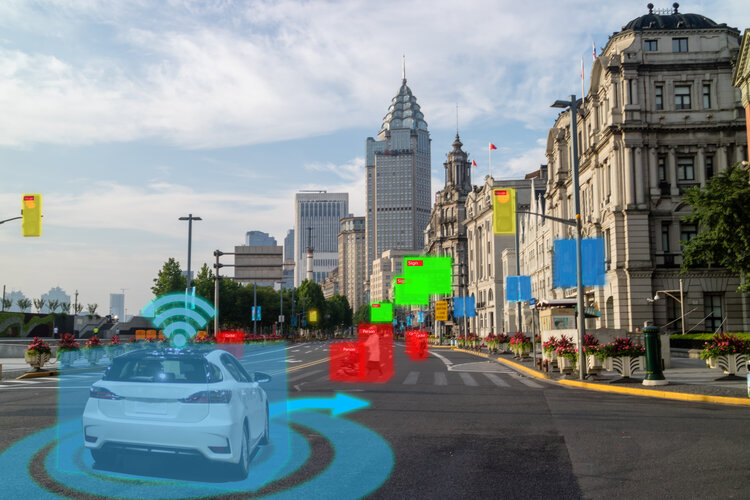
Copernical Team
Friday, 18 February 2022 05:11
Space sector set to create new jobs in Highland and Moray
Moray, Scotland (SPX) Feb 18, 2022
 Ambitious plans to create hundreds of high quality jobs and business opportunities by developing a North Highland and Moray 'space cluster' have received a 38,000 pound boost from the UK Space Agency.
A strategy to develop the cluster, funded by Highlands and Islands Enterprise (HIE) and Dounreay Site Restoration Ltd (DSRL), was published last September by Caithness and North Sutherland
Ambitious plans to create hundreds of high quality jobs and business opportunities by developing a North Highland and Moray 'space cluster' have received a 38,000 pound boost from the UK Space Agency.
A strategy to develop the cluster, funded by Highlands and Islands Enterprise (HIE) and Dounreay Site Restoration Ltd (DSRL), was published last September by Caithness and North Sutherland
 Ambitious plans to create hundreds of high quality jobs and business opportunities by developing a North Highland and Moray 'space cluster' have received a 38,000 pound boost from the UK Space Agency.
A strategy to develop the cluster, funded by Highlands and Islands Enterprise (HIE) and Dounreay Site Restoration Ltd (DSRL), was published last September by Caithness and North Sutherland
Ambitious plans to create hundreds of high quality jobs and business opportunities by developing a North Highland and Moray 'space cluster' have received a 38,000 pound boost from the UK Space Agency.
A strategy to develop the cluster, funded by Highlands and Islands Enterprise (HIE) and Dounreay Site Restoration Ltd (DSRL), was published last September by Caithness and North Sutherland
Published in
News
Tagged under
Friday, 18 February 2022 05:11
Preventing Lunar traffic jams
Tucson AZ (SPX) Feb 15, 2022
 The moon is top of mind for many national space programs and private companies, with some planning to send humans back to the lunar surface as early as 2025.
In advance, scientists are launching satellites and other payloads to orbit the moon. But so far, no one has kept track of just how many artificial objects are already up there, or where they are at any given moment. Without a way to
The moon is top of mind for many national space programs and private companies, with some planning to send humans back to the lunar surface as early as 2025.
In advance, scientists are launching satellites and other payloads to orbit the moon. But so far, no one has kept track of just how many artificial objects are already up there, or where they are at any given moment. Without a way to
 The moon is top of mind for many national space programs and private companies, with some planning to send humans back to the lunar surface as early as 2025.
In advance, scientists are launching satellites and other payloads to orbit the moon. But so far, no one has kept track of just how many artificial objects are already up there, or where they are at any given moment. Without a way to
The moon is top of mind for many national space programs and private companies, with some planning to send humans back to the lunar surface as early as 2025.
In advance, scientists are launching satellites and other payloads to orbit the moon. But so far, no one has kept track of just how many artificial objects are already up there, or where they are at any given moment. Without a way to
Published in
News
Tagged under
Friday, 18 February 2022 05:11
Terran Orbital to build microsatellite program
Boca Raton FL (SPX) Feb 18, 2022
 Small-satellite pioneer Terran Orbital Corporation ("Terran Orbital") was awarded a contract by Lockheed Martin Aeronautics to provide three microsatellite class satellites, launch procurement, integration, and operations in support of product demonstration.
"We are thrilled Terran Orbital will be part of another program with Lockheed Martin. This contract award provides an exciting opport
Small-satellite pioneer Terran Orbital Corporation ("Terran Orbital") was awarded a contract by Lockheed Martin Aeronautics to provide three microsatellite class satellites, launch procurement, integration, and operations in support of product demonstration.
"We are thrilled Terran Orbital will be part of another program with Lockheed Martin. This contract award provides an exciting opport
 Small-satellite pioneer Terran Orbital Corporation ("Terran Orbital") was awarded a contract by Lockheed Martin Aeronautics to provide three microsatellite class satellites, launch procurement, integration, and operations in support of product demonstration.
"We are thrilled Terran Orbital will be part of another program with Lockheed Martin. This contract award provides an exciting opport
Small-satellite pioneer Terran Orbital Corporation ("Terran Orbital") was awarded a contract by Lockheed Martin Aeronautics to provide three microsatellite class satellites, launch procurement, integration, and operations in support of product demonstration.
"We are thrilled Terran Orbital will be part of another program with Lockheed Martin. This contract award provides an exciting opport
Published in
News
Tagged under
Friday, 18 February 2022 05:11
Coca-Cola launching new Starlight drink 'inspired by space'
Washington DC (UPI) Feb 18, 2022
 A new flavor of Coca-Cola is coming soon - a promotional announcement from Coca-Coca Thursday said, "From the furthest reaches of the galaxy, Coca-Cola Starlight is arriving."
The new limited edition drink, called Coca-Cola Starlight, features a taste the beverage maker calls unique, and will be offered in both regular and zero sugar and is expected to be available Feb. 21.
In a pres
A new flavor of Coca-Cola is coming soon - a promotional announcement from Coca-Coca Thursday said, "From the furthest reaches of the galaxy, Coca-Cola Starlight is arriving."
The new limited edition drink, called Coca-Cola Starlight, features a taste the beverage maker calls unique, and will be offered in both regular and zero sugar and is expected to be available Feb. 21.
In a pres
 A new flavor of Coca-Cola is coming soon - a promotional announcement from Coca-Coca Thursday said, "From the furthest reaches of the galaxy, Coca-Cola Starlight is arriving."
The new limited edition drink, called Coca-Cola Starlight, features a taste the beverage maker calls unique, and will be offered in both regular and zero sugar and is expected to be available Feb. 21.
In a pres
A new flavor of Coca-Cola is coming soon - a promotional announcement from Coca-Coca Thursday said, "From the furthest reaches of the galaxy, Coca-Cola Starlight is arriving."
The new limited edition drink, called Coca-Cola Starlight, features a taste the beverage maker calls unique, and will be offered in both regular and zero sugar and is expected to be available Feb. 21.
In a pres
Published in
News
Tagged under
Friday, 18 February 2022 05:11
Blue Origin to build more rockets amid expectations to tourist flights
Moscow (Sputnik) Feb 18, 2022
 Jeff Bezos' Blue Origin space company says it will have to build more of its New Shepard rockets in order to meet the "very robust demand" for space tourism, the company's CEO said.
At the FAA Commercial Space Transportation Conference in Washington, DC, on Thursday, Blue Origin CEO Bob Smith said the company had "thousands of people in the auction process" for tickets, indicating "very ro
Jeff Bezos' Blue Origin space company says it will have to build more of its New Shepard rockets in order to meet the "very robust demand" for space tourism, the company's CEO said.
At the FAA Commercial Space Transportation Conference in Washington, DC, on Thursday, Blue Origin CEO Bob Smith said the company had "thousands of people in the auction process" for tickets, indicating "very ro
 Jeff Bezos' Blue Origin space company says it will have to build more of its New Shepard rockets in order to meet the "very robust demand" for space tourism, the company's CEO said.
At the FAA Commercial Space Transportation Conference in Washington, DC, on Thursday, Blue Origin CEO Bob Smith said the company had "thousands of people in the auction process" for tickets, indicating "very ro
Jeff Bezos' Blue Origin space company says it will have to build more of its New Shepard rockets in order to meet the "very robust demand" for space tourism, the company's CEO said.
At the FAA Commercial Space Transportation Conference in Washington, DC, on Thursday, Blue Origin CEO Bob Smith said the company had "thousands of people in the auction process" for tickets, indicating "very ro
Published in
News
Tagged under
Friday, 18 February 2022 05:11
Research project examines how humans live in space
Ottawa, Canada (SPX) Feb 18, 2022
 As long-distance space travel transforms from a science fiction fantasy to a near-future reality, humanity is faced with a complex challenge: Can people socially and culturally adapt to and survive spending years hurtling across the universe in a contained, artificial space?
Shawn Graham, a digital archaeologist and historian at Carleton University, is working with the International Space
As long-distance space travel transforms from a science fiction fantasy to a near-future reality, humanity is faced with a complex challenge: Can people socially and culturally adapt to and survive spending years hurtling across the universe in a contained, artificial space?
Shawn Graham, a digital archaeologist and historian at Carleton University, is working with the International Space
 As long-distance space travel transforms from a science fiction fantasy to a near-future reality, humanity is faced with a complex challenge: Can people socially and culturally adapt to and survive spending years hurtling across the universe in a contained, artificial space?
Shawn Graham, a digital archaeologist and historian at Carleton University, is working with the International Space
As long-distance space travel transforms from a science fiction fantasy to a near-future reality, humanity is faced with a complex challenge: Can people socially and culturally adapt to and survive spending years hurtling across the universe in a contained, artificial space?
Shawn Graham, a digital archaeologist and historian at Carleton University, is working with the International Space
Published in
News
Tagged under
Friday, 18 February 2022 05:11
Europe needs a crewed space vehicle, astronauts say
Washington DC (UPI) Feb 16, 2021
 Europe needs its own crewed spaceship to build its space industry and talent, astronauts who gathered in France said in an official manifesto Wednesday.
Dozens of astronauts endorsed the statement that "we need to be able to count on our own autonomous access to space for humans," according to the manifesto presented at the 2022 European Space Summit in Toulouse.
It calls on Euro
Europe needs its own crewed spaceship to build its space industry and talent, astronauts who gathered in France said in an official manifesto Wednesday.
Dozens of astronauts endorsed the statement that "we need to be able to count on our own autonomous access to space for humans," according to the manifesto presented at the 2022 European Space Summit in Toulouse.
It calls on Euro
 Europe needs its own crewed spaceship to build its space industry and talent, astronauts who gathered in France said in an official manifesto Wednesday.
Dozens of astronauts endorsed the statement that "we need to be able to count on our own autonomous access to space for humans," according to the manifesto presented at the 2022 European Space Summit in Toulouse.
It calls on Euro
Europe needs its own crewed spaceship to build its space industry and talent, astronauts who gathered in France said in an official manifesto Wednesday.
Dozens of astronauts endorsed the statement that "we need to be able to count on our own autonomous access to space for humans," according to the manifesto presented at the 2022 European Space Summit in Toulouse.
It calls on Euro
Published in
News
Tagged under
Thursday, 17 February 2022 13:52
Wanted: your new ideas for navigation

It is hard to overstate the importance of knowing precisely where (and when) you are and where you are going within today’s economy and society. Do you have a promising idea to improve the current positioning state-of-the-art? Then ESA’s navigation-focused NAVISP research programme wants to hear from you, before the end of March.
Published in
News
Tagged under
Wednesday, 16 February 2022 17:00
Luca Parmitano presents the European Astronauts’ Manifesto
 Video:
00:08:47
Video:
00:08:47
ESA astronaut Luca Parmitano presents the European Astronauts’ Manifesto during the Space Summit in Toulouse, on 16 February 2022.
Published in
News
Tagged under
Wednesday, 16 February 2022 17:30
Josef Aschbacher’s speech at the ESA Council meeting
 Video:
00:12:41
Video:
00:12:41
ESA Director General Josef Aschbacher speaks at the start of the ESA Council Meeting at Ministerial Level, part of the Space Summit in Toulouse, on 16 February 2022.
Published in
News
Tagged under

